![visit from st nick (A reprint of the first [sic] publication of "A visit from St. Nicholas." [n. p., ca. 1919].; LOC: https://www.loc.gov/item/rbpe.11804300/?q=a+visit+from+st.+nicholas)](https://www.bluegrayreview.com/wp-content/uploads/2017/12/visit-from-st-nick-1024x427.jpg)
artist’s rendition of Christmas Eve 1822
![A reprint of the first [sic] publication of "A visit from St. Nicholas." [n. p., ca. 1919]. (LOC: https://www.loc.gov/item/rbpe.11804300/?q=a+visit+from+st.+nicholas)](https://www.bluegrayreview.com/wp-content/uploads/2017/12/reprintfirstpub-204x300.jpg)
reprint of the original report in the Troy Sentinel
I have always been thankful for the 19th century investigative report, “A Visit from from St. Nicholas.” First published anonymously in the Troy
Sentinel on Dec. 23, 1823, the report was later attributed to
Clement Clarke Moore and has become more widely known as “The Night Before Christmas.” I am grateful for the article because it explains so many of the phenomena associated with the night between the 24th and 25th of December. Perhaps the best example is the magical appearance of presents under the Christmas tree and the magical disappearance of cookies and carrots from the kitchen table apparent on Christmas morning. Moreover, since the same experience reportedly still recurs pretty much over the whole wide world on that one night, speed must be a factor, and the report’s description of the relatively small size of sleigh, reindeer, and St. Nicholas himself (described as elfin, albeit with a round, jiggly belly) would seem to help help explain the almost magical speed of the sled. After all, given the same horse … or reindeerpower, the smaller the load, the faster the flight. Also, I’m paraphrasing, but on one of his TV shows Jerry Seinfeld said that if you name your child Bozo you’ve pretty well laid out his or her career path. If we are to some extent a reflection of our names, think of St. Nicholas’s reindeer – Dasher, Prancer, Comet, Blitzen, etc. – these reindeer are built for speed. Although I don’t recall any specific instances of hearing a racket on the roof or smelling a hint of pipe tobacco in the living room, the report has given me a reason, while lying in bed on December 24th, to look up at the night sky and wonder …
And the famous report has been appreciated by others over the past nearly two centuries. According to documentation in the December 30, 1917 issue of The New-York Times (at the Library of Congress) some New Yorkers made a pilgrimage to Mr. Moore’s tomb on Christmas Eve of that year:
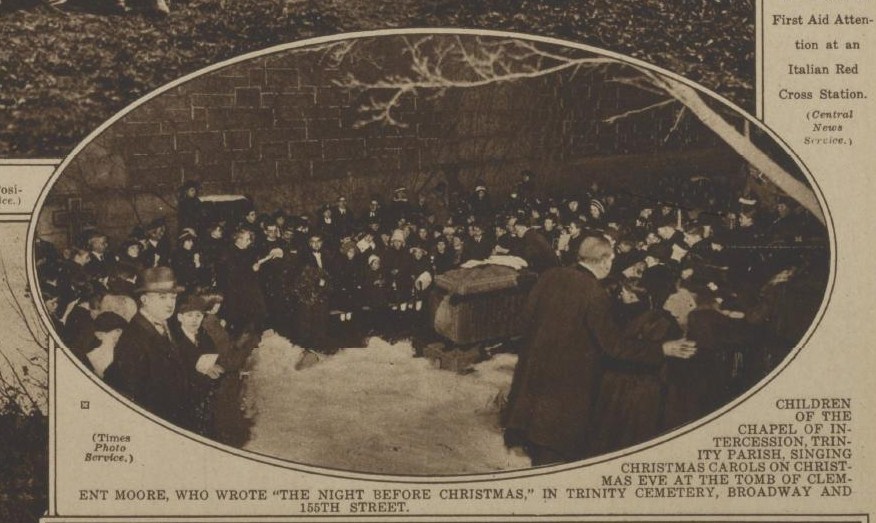
carols at Clement’s
Although not inspired to visit his grave, I was interested in learning more about the investigative journalist. I was a bit disheartened to find out there is now a scholarly controversy about the identity of the story’s actual writer. Some believe the reporter was really Henry Livingston Jr.. But don’t worry, Virginia, so far no one has challenged the veracity of the report itself. However, I should mention that the original 1823 story might have omitted some facts about the annual phenomena. For example, there seems to be anecdotal evidence of a ninth reindeer, often referred to as Rudolph, who serves as a sort of on-call headlight for the sleigh when St. Nicholas is unable to fly by the light of the moon.
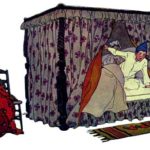
Clement or Henry, Jr?
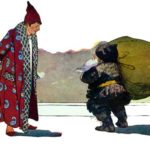
interview
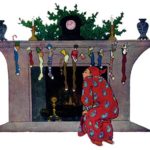
investigating means of ingress/egress

Rudolph gets the night off
________________________________________________
A couple other Christmas-themed photos from the December 30, 1917 issue of The New-York Times. Camp Wadsworth was located near Spartanburg, South Carolina and named after Civil War General James S. Wadsworth
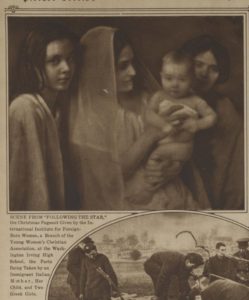
a child is born
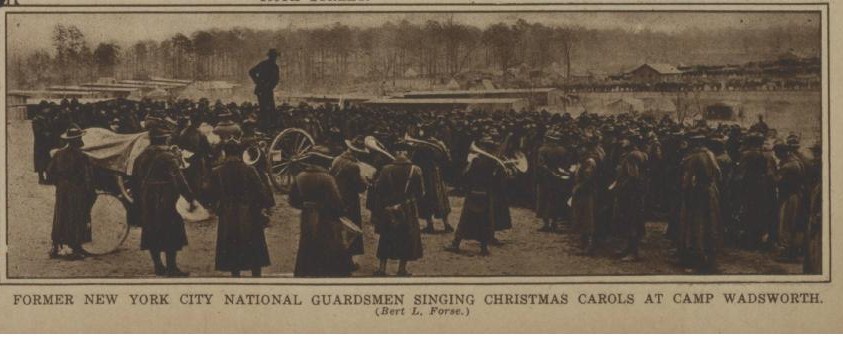
singing in the South
Jessie Willcox Smith’s colorful illustrations can be found at Project Gutenberg. From the Library of Congress: the reprint of the original Troy, NY publication on December 23, 1823; the Times; greeting
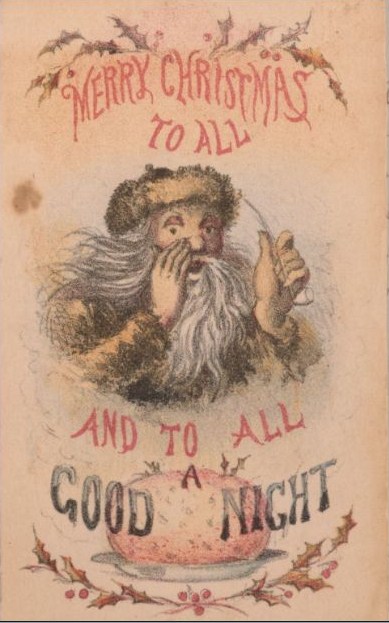
indeed

![visit from st nick (A reprint of the first [sic] publication of "A visit from St. Nicholas." [n. p., ca. 1919].; LOC: https://www.loc.gov/item/rbpe.11804300/?q=a+visit+from+st.+nicholas)](https://www.bluegrayreview.com/wp-content/uploads/2017/12/visit-from-st-nick-1024x427.jpg)
![A reprint of the first [sic] publication of "A visit from St. Nicholas." [n. p., ca. 1919]. (LOC: https://www.loc.gov/item/rbpe.11804300/?q=a+visit+from+st.+nicholas)](https://www.bluegrayreview.com/wp-content/uploads/2017/12/reprintfirstpub-204x300.jpg)







